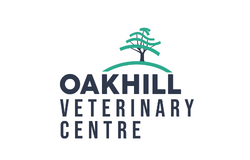SYCAMORE POISONING: THE FACTS
Many of you may have noticed the characteristic helicopter seeds present in sycamore trees as of late, so we thought it would be a good time to remind you about sycamore poisoning, also known as atypical myopathy.
WHAT IS IT? A highly fatal muscle disorder that occurs following the ingestion of sycamore seeds or leaves in autumn, or seedlings in spring, that contain the hypoglycin A toxin.
SEVERITY: There is sadly a 75% fatality rate with most non-survivors succumbing within 72 hours of the development of clinical signs.
PREVELANCE: The toxin is not present in all sycamores and toxin levels may differ at different times of year and under different climatic conditions. Cases often follow an adverse change in weather conditions such as frost or rain.
CLINICAL SIGNS: Weakness, stiffness, muscle tremors, a fast (sometimes irregular) heartbeat, difficulties in breathing and dark red/brown coloured urine. Other clinical signs include depression and signs of colic. Severely affected horses become recumbent and others may be found already deceased.
DIAGNOSIS
- The presence of compatible clinical signs.
- A history of grazing pasture containing sycamore trees.
- Physical examination.
- Blood work findings.
Blood work includes evidence of dehydration and an exponential increase in muscle enzyme values, with or without increased kidney enzyme values. We run this bloodwork in-house with a rapid turn-around time on results.
For the definitive diagnosis, sample(s) are submitted to the Royal Veterinary College (RVC) for analysis. Results take a number of days to return; therefore if atypical myopathy is suspected, then the affected patient will be treated as such.
TREATMENT
Time is of the essence and rapid initiation of treatment is essential to improve prognosis. Suspected cases are generally hospitalised to facilitate intensive medical management.
Treatment is predominantly based on supportive care including administration of large volumes of intravenous fluid therapy. The provision of adequate pain relief is vitally important and the administration of vitamins can be advantageous.
PREVENTION
Prevention is based on preventing exposure to sycamore seedlings in spring, and seeds and leaves in autumn. Fence off the sycamore trees and surrounding area.
- Collect the seeds and leaves regularly.
- Fields containing sycamore debris should not be used to make hay/haylage.
- To discourage your horse from seeking out undesirable plants, additional forage should be provided if pasture is poor.
Important: helicopter seeds may travel up to 200 yards!
Remember, not all sycamores contain the hypoglycin A toxin. To determine if your trees do, you can get them tested at the RVC Comparative Neuromuscular Diseases Lab.
